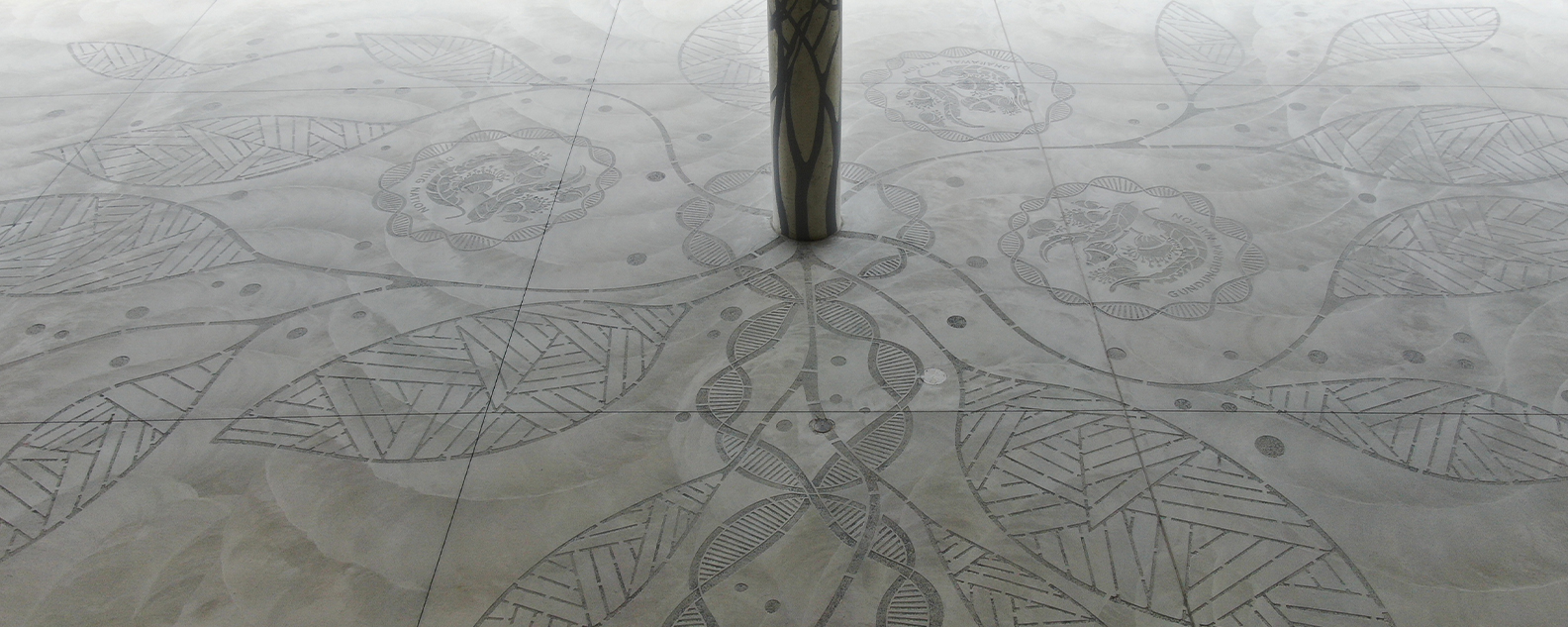The First Nations ‘Life Blood’ display at the Australian Botanic Garden Mount Annan is more than a breathtaking artwork – it’s a powerful story connecting Country, culture and science.
This profound walk-through carving was created by artists Aunty Susan Grant, Natalie Valiente and Codie Leed Evans. Etched onto the forecourt of the National Herbarium of New South Wales, the design reflects on First Nations people’s traditional and spiritual uses of plants, the science of the Herbarium, and our universal connections to the land.
The spectacular spirals and patterns draw on inspiration from the microscopic view of a eucalyptus leaf. Looking at a gum leaf under a microscope is like viewing the land from far above. Eucalyptus trees are an iconic native species and are used by First Nations people in many ways – for tools, medicine, food, weapons, shelter, markers and ceremonies.
The meandering, intersecting veins also resemble rivers and travelling trails that lead to Mount Annan, which is symbolised by a central column. The oil spots look like waterholes and meeting places of communities across Dharawal land. The tendrils reach up as song lines and stories to ancestors who have passed, spiritually reconnecting them.
DNA strands are also carved throughout the piece, representing the lifeblood of First Nations people and their connection to Country. The threads also represent the significant plant research, education and conservation projects undertaken by the Australian Institute of Botanical Science and First Nations Australian Communities.
The circles of DNA and gum blossoms are the Nations of Dharawal, Dharug and Gundungurra, who have always used Mount Annan as a meeting place for trading, marriage, disputes and ceremonies.
When unified, all aspects of the artwork come together to form a tree; the DNA is the trunk, the rivers and pathways are the branches and leaves – a reminder that we are all interconnected with one another, and with the land on which we depend to live.
The piece is an acknowledgement and show of gratitude to the area’s First Peoples, who continue to care for Country. It celebrates the connection between people, place and plants that unites all Australians.
